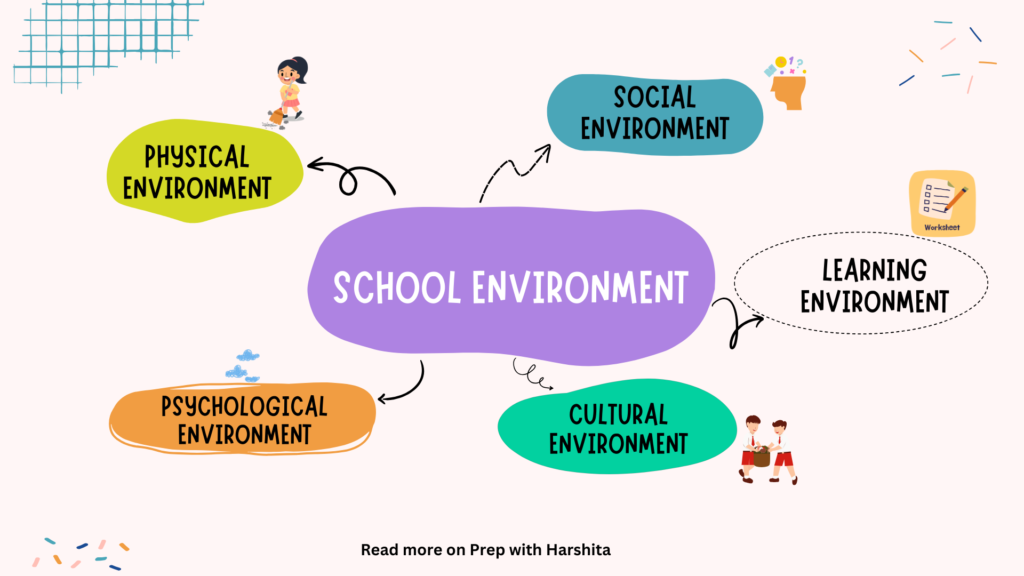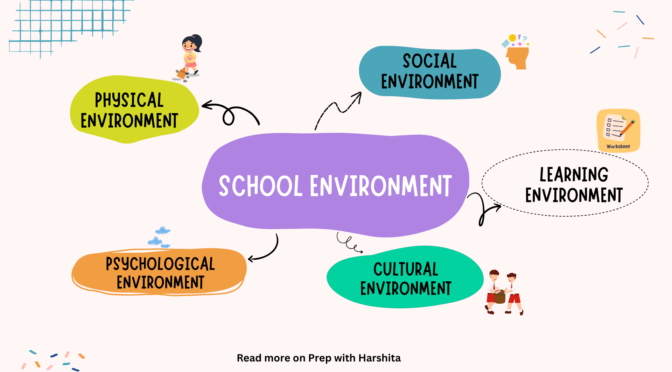Psychological Environment:
- Emotional Climate: The emotional tone of the school environment affects students’ emotional well-being. A supportive and inclusive emotional climate enhances learning.
- Expectations and Standards: Clear expectations for behavior and academic performance contribute to a psychologically healthy environment.
- Inclusivity: A school that values diversity and promotes inclusivity creates a positive psychological environment for all students.
Cultural Environment:
- Cultural Diversity: The presence of students from diverse backgrounds contributes to a rich cultural environment. Schools that celebrate diversity create a more inclusive and tolerant atmosphere.
- Multicultural Education: Intentional efforts to incorporate diverse perspectives, histories, and cultures into the curriculum contribute to the cultural environment.
Learning Environment:
- Teaching Methods: The methods used by educators, including pedagogical approaches, technology integration, and student engagement strategies, contribute to the learning environment.
- Curriculum Design: The design and relevance of the curriculum impact the intellectual atmosphere of the school.
- Educational Resources: The availability of books, technology, and other resources contributes to the overall learning environment.
Also Visit: Prep with Harshita


